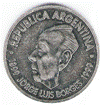Modern Languages and Literatures, Department of

Spanish Language and Literature Papers
Document Type
Article
Date of this Version
May 2001
Abstract
In Sitio a Eros and El coloquio de las perras, Rosario Ferré turns the traditional Spanish American essay into a most propitious space to investigate issues of gender and more specifically, writing as a potential vehicle for women's ultimate liberation. In these two books, in which the line between literary criticism and feminist criticism is hard to separate, she joins the ranks of writers such as Gabriela Mistral, Victoria Ocampo and Rosario Castellanos, Latin America's best-known female predecessors in the essay.
Most of the essays included in Ferré's Sitio a Eros (1980, 1986) were written in the late seventies, when feminist criticism had not yet been formulated as the more inclusive type of criticism it is today. The essays of El coloquio de las perras (1992), on the other hand, were most likely written in the late eighties and, not surprisingly, represent a clear movement forward in the development of feminist literary criticism, especially as the influence of North-American as well as French feminist theories has occasioned the interrogation of what a truly Latin American feminist movement should look like. In these two texts Ferré takes the Spanish American essay in a new direction, away from the traditional concerns of male essayists.
The essays assembled in Sitio and El coloquio revolve around a single topic: the writing of women and the potential of feminist criticism to create a fairer world for all. The focus in these books, and expressly in the two most prominent essays of the collection—"La cocina de la escritura" in Sitio and "El coloquio de las perras" in Coloquio— is the perennial issue of la écriture féminine. In these texts the first-person narrative interrogates not only the usual representation of women by male writers, or the practically absent presence of the female persona in the traditional Spanish American essay, but also the subject of representation itself. This does not mean that Ferré lacks an interest in other aspects of Latin American life such as history and politics; her novels and short stories certainly prove otherwise. Rather, it means that, unlike the official historians of the continent who have centered their attention on generals and battles, and unlike male Latin American essayists who scrutinize questions of social, cultural and economic inequality in a country or who synthesize the character of an entire people, Rosario Ferré seeks to bring into focus the topic of women's writing. With her the ubiquitous issues of character and national identity cede to the issue of gender in the discourse of the essay. By alluding to her own experience with writing, and especially by inscribing her "self" in her essays, she accompanies and shares—emotionally and intellectually—the precarious experience of women writers in modern society.


Comments
Published in Hispanófila 132 (May 2001), pages 103-23. Published by the Department of Romance Languages and Literatures, University of North Carolina at Chapel Hill. http://roml.unc.edu/pubs/index.htm
Copyright © 2001 J. Agustín Pastén B.